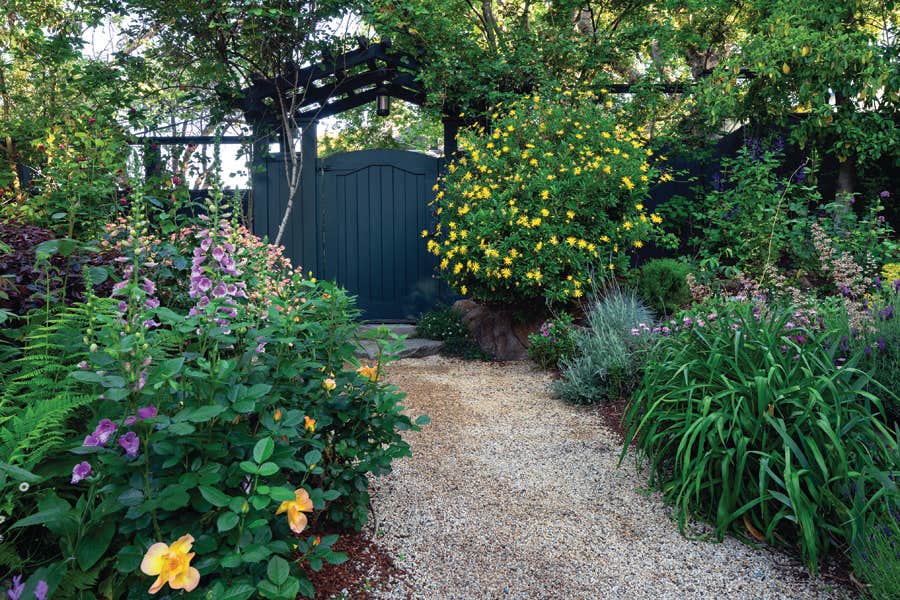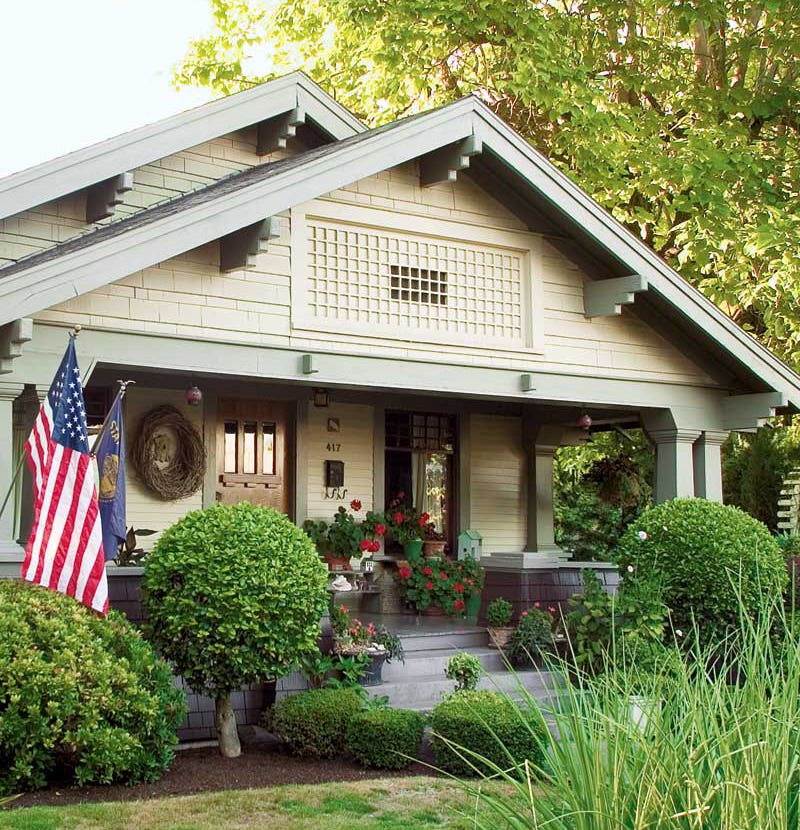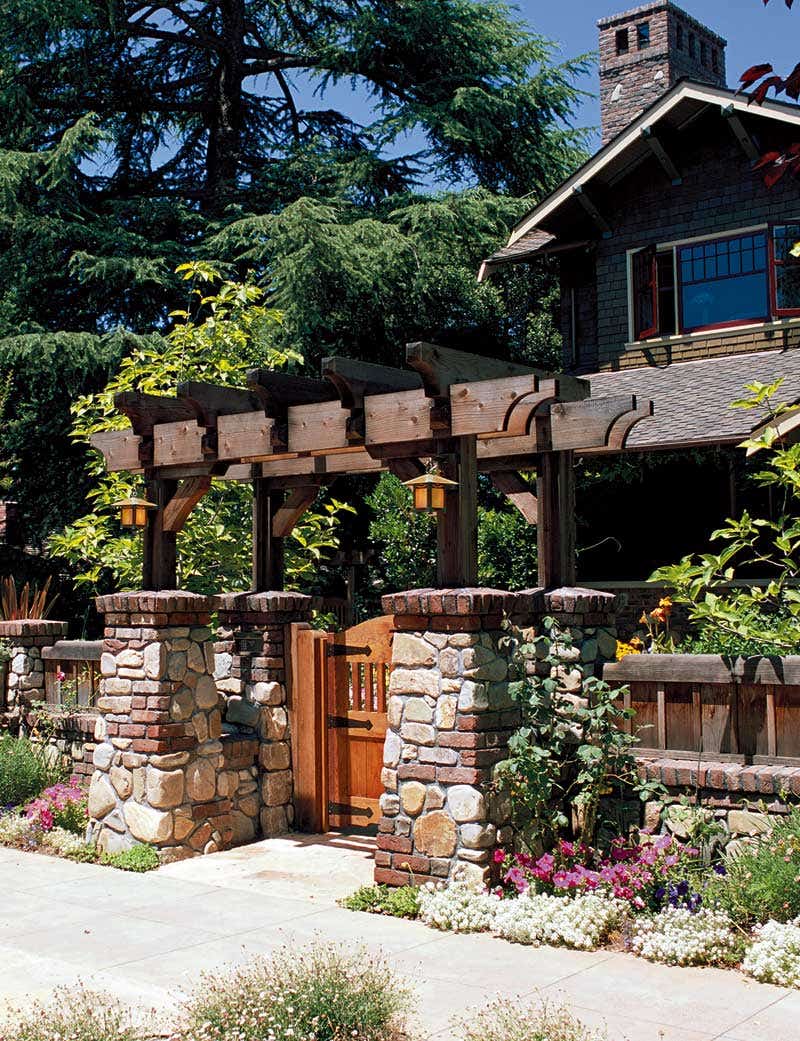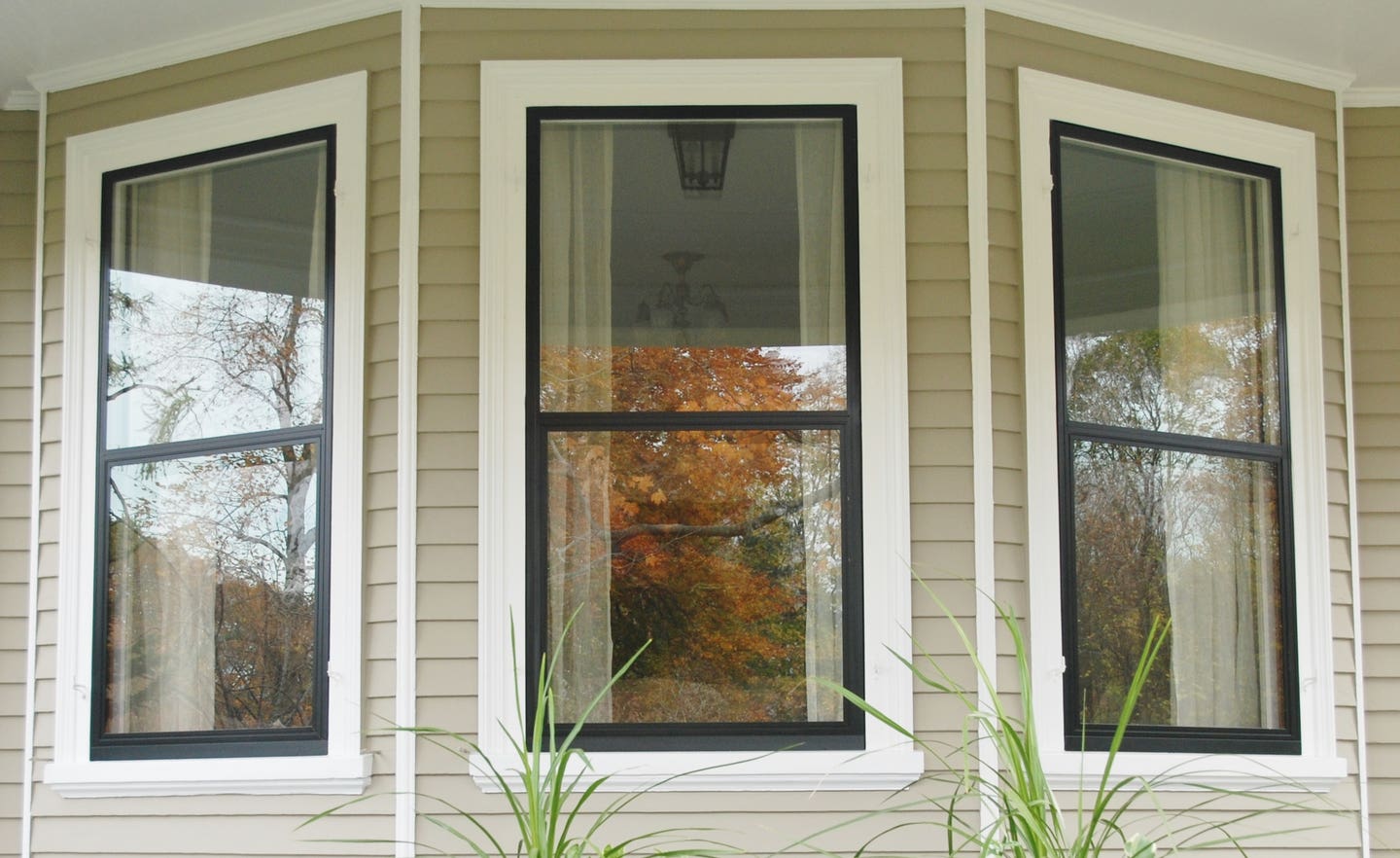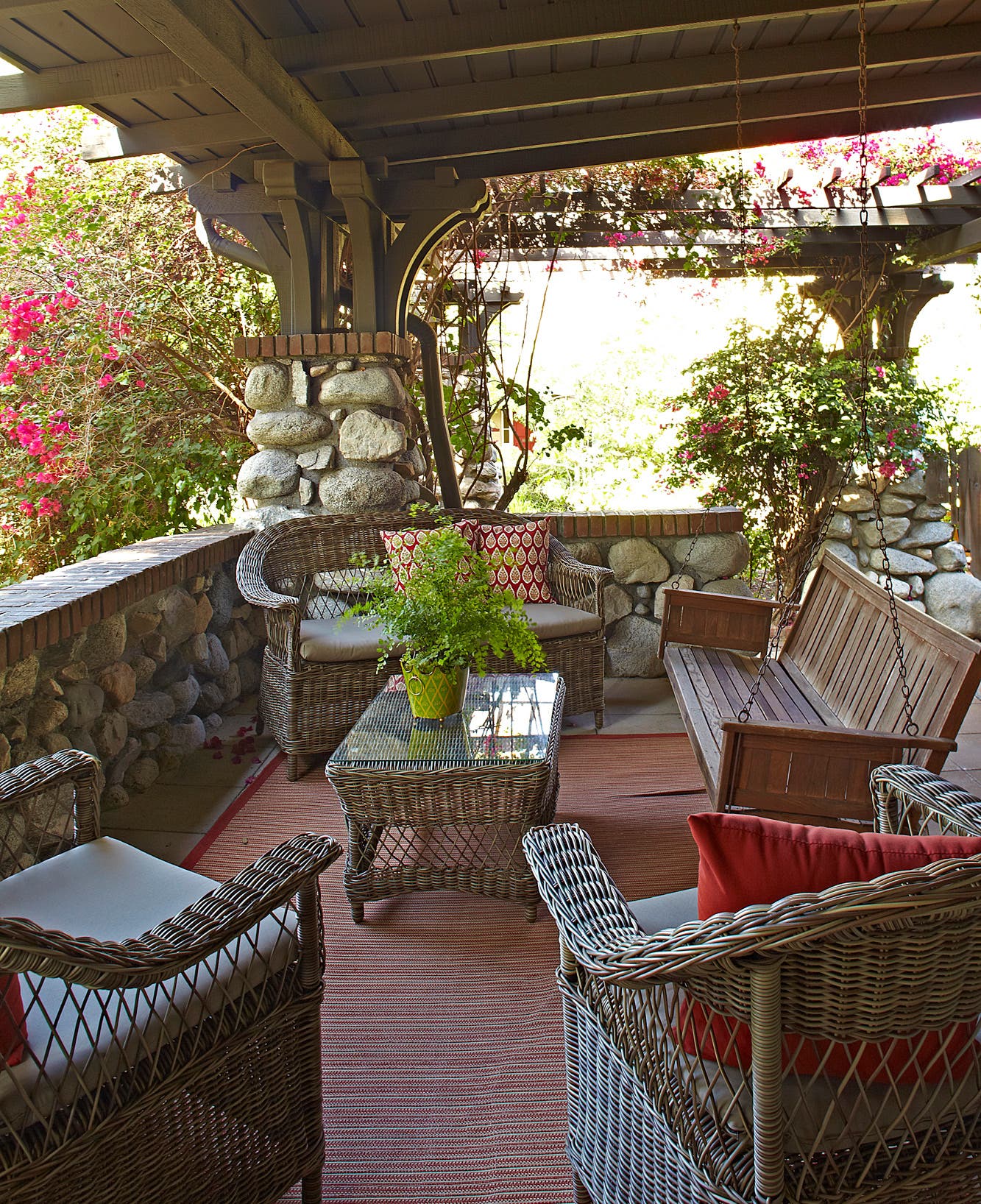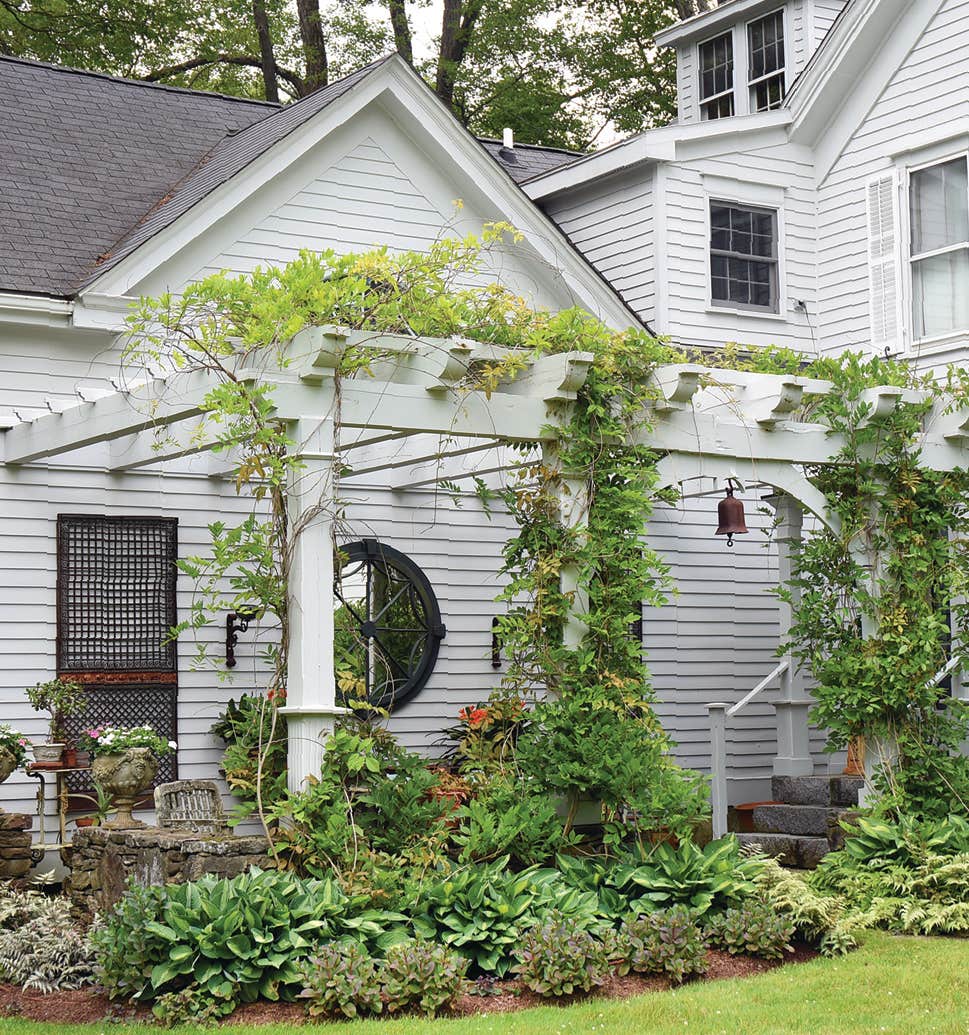Revival Woodwork
Some new projects around the country illustrate how the use of revival millwork elements and period details lend scale, quality, and style to a porch, a house, or a backyard structure.
The Incredible Green Home
This new Foursquare was built by the company Bethesda Bungalows on an infill lot in Chevy Chase, Maryland. The project is called “the incredible green home” because of its energy-efficient construction: it received platinum-level LEED certification. But the beauty of the house comes from its extraordinary details, influenced by bungalow-era and Prairie School details. It was designed by revival architect Christian Gladu of Bend, Oregon.
Overhanging eaves, grouped windows with substantial trim, a tapered entry door, and decorated square columns create interest outside. The same quality continues on the interior, where the dining room is elevated and the platform surrounded by large boxed columns. A built-in breakfast nook in the kitchen includes storage underneath the benches.
Arts & Crafts Modern-Rustic
Craftsmanship and intimate spaces define another new house, designed by architect Shawn Leatherwood. It’s part modern, part rustic, and part North Carolina vernacular, but millwork details are clearly influenced by houses of the Arts & Crafts period.
The exterior is clad in clapboards, shingles, and board-and-batten siding, all of which lends scale to this rambling house tucked into a hillside. A timber truss, half-timbered details, and large under-eave brackets (on the garage extension) are handsome elements.
Inside, square piers and columns separate rooms. A period-inspired wood wainscot lends scale to high-ceiling rooms.
Arts & Crafts Garden Structures
Garden structures are important in this period, too, and demand stylish millwork. Although derived from classical architecture, the pergola is a bungalow-era staple. Attached to the house or freestanding in the garden, a pergola consists of a colonnade (row of columns or piers) supporting an open roof, on which vines are often trained.
In suburban yards, even the tool shed is visible. Custom design, period details, and paint color will make the most prosaic outbuilding an asset.
Patricia Poore is Editor-in-chief of Old House Journal and Arts & Crafts Homes, as well as editorial director at Active Interest Media’s Home Group, overseeing New Old House, Traditional Building, and special-interest publications.
Poore joined Old House Journal when it was a Brooklyn-brownstoner newsletter in the late 1970s. She became owner and publisher and, except for the years 2002–2013, has been its editor. Poore founded the magazines Old-House Interiors (1995–2013) and Early Homes (2004–2017); their content is now available online and folded into Old-House Journal’s wider coverage. Poore also created GARBAGE magazine (1989–1994), the first unaffiliated environmental consumer magazine.
Poore has participated, hands-on, in several restorations, including her own homes: a 1911 brownstone in Park Slope, Brooklyn, and a 1904 Tudor–Shingle Style house in Gloucester, Massachusetts, where she brought up her boys and their wonderful dogs.



